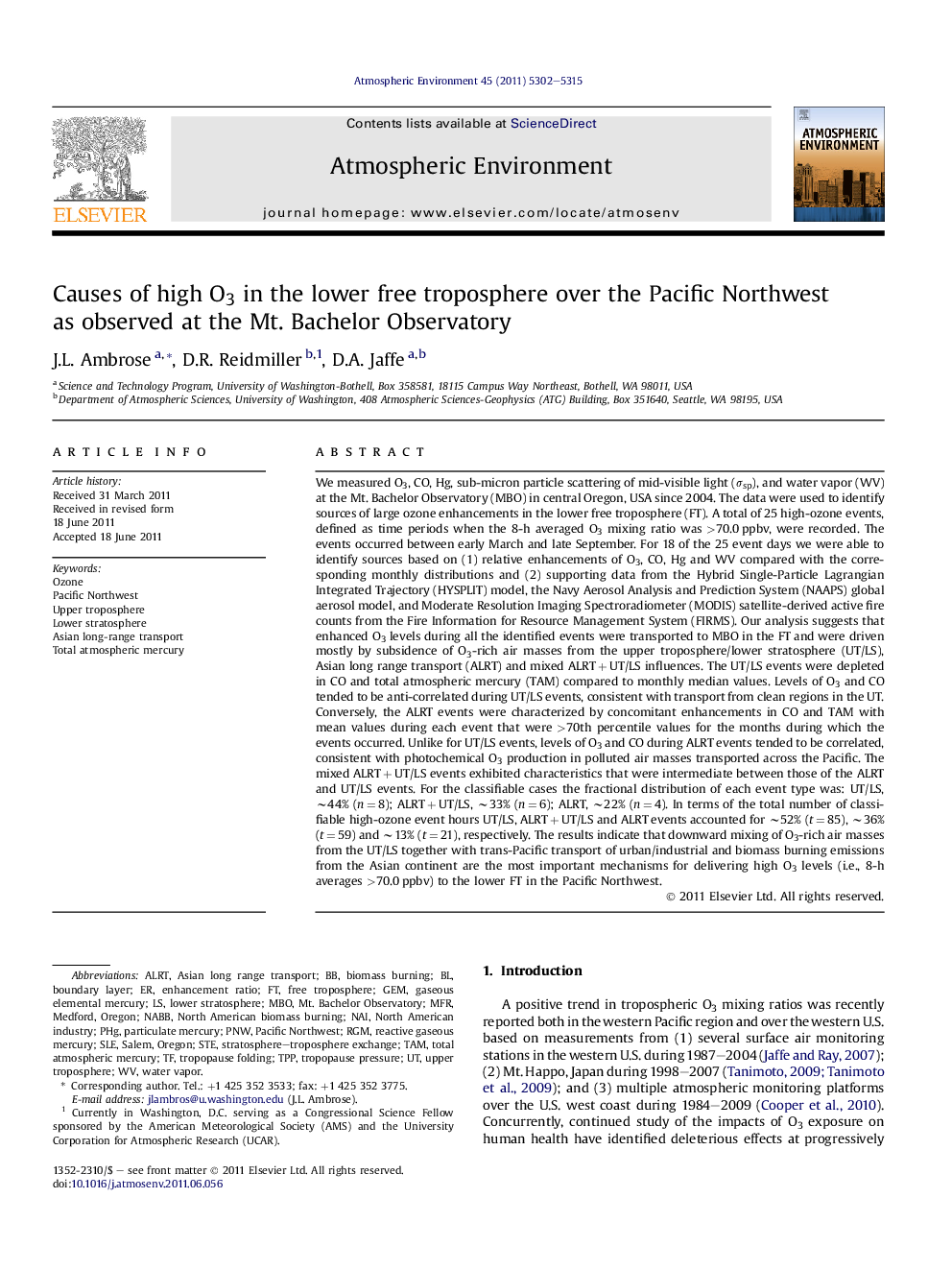| Article ID | Journal | Published Year | Pages | File Type |
|---|---|---|---|---|
| 4439441 | Atmospheric Environment | 2011 | 14 Pages |
We measured O3, CO, Hg, sub-micron particle scattering of mid-visible light (σsp), and water vapor (WV) at the Mt. Bachelor Observatory (MBO) in central Oregon, USA since 2004. The data were used to identify sources of large ozone enhancements in the lower free troposphere (FT). A total of 25 high-ozone events, defined as time periods when the 8-h averaged O3 mixing ratio was >70.0 ppbv, were recorded. The events occurred between early March and late September. For 18 of the 25 event days we were able to identify sources based on (1) relative enhancements of O3, CO, Hg and WV compared with the corresponding monthly distributions and (2) supporting data from the Hybrid Single-Particle Lagrangian Integrated Trajectory (HYSPLIT) model, the Navy Aerosol Analysis and Prediction System (NAAPS) global aerosol model, and Moderate Resolution Imaging Spectroradiometer (MODIS) satellite-derived active fire counts from the Fire Information for Resource Management System (FIRMS). Our analysis suggests that enhanced O3 levels during all the identified events were transported to MBO in the FT and were driven mostly by subsidence of O3-rich air masses from the upper troposphere/lower stratosphere (UT/LS), Asian long range transport (ALRT) and mixed ALRT + UT/LS influences. The UT/LS events were depleted in CO and total atmospheric mercury (TAM) compared to monthly median values. Levels of O3 and CO tended to be anti-correlated during UT/LS events, consistent with transport from clean regions in the UT. Conversely, the ALRT events were characterized by concomitant enhancements in CO and TAM with mean values during each event that were >70th percentile values for the months during which the events occurred. Unlike for UT/LS events, levels of O3 and CO during ALRT events tended to be correlated, consistent with photochemical O3 production in polluted air masses transported across the Pacific. The mixed ALRT + UT/LS events exhibited characteristics that were intermediate between those of the ALRT and UT/LS events. For the classifiable cases the fractional distribution of each event type was: UT/LS, ∼44% (n = 8); ALRT + UT/LS, ∼33% (n = 6); ALRT, ∼22% (n = 4). In terms of the total number of classifiable high-ozone event hours UT/LS, ALRT + UT/LS and ALRT events accounted for ∼52% (t = 85), ∼36% (t = 59) and ∼13% (t = 21), respectively. The results indicate that downward mixing of O3-rich air masses from the UT/LS together with trans-Pacific transport of urban/industrial and biomass burning emissions from the Asian continent are the most important mechanisms for delivering high O3 levels (i.e., 8-h averages >70.0 ppbv) to the lower FT in the Pacific Northwest.
► In this study we determine causes of high ozone at the Mt. Bachelor Observatory. ► High-ozone events occur during spring, summer and fall. ► High ozone is mostly transported from the upper troposphere/lower stratosphere. ► High ozone is also traced to Asian anthropogenic and biomass burning emissions.
